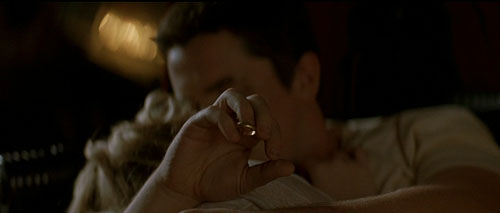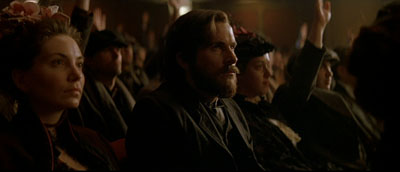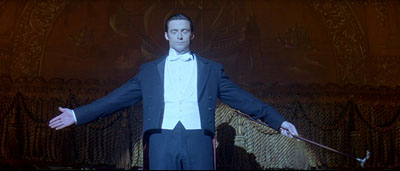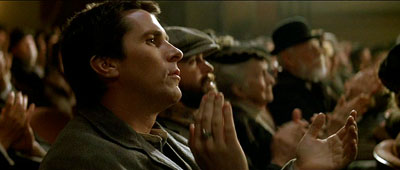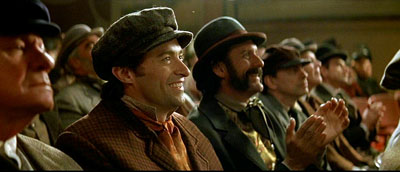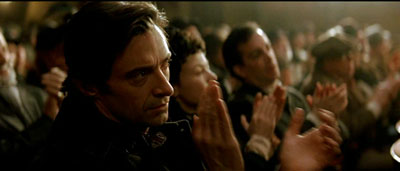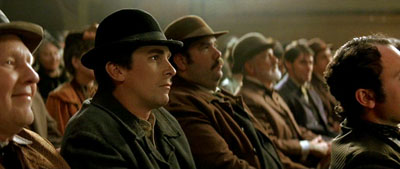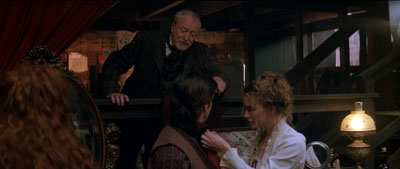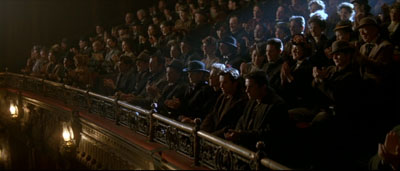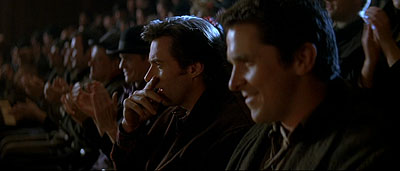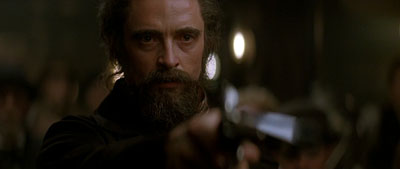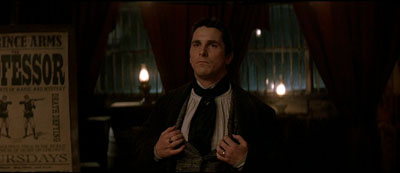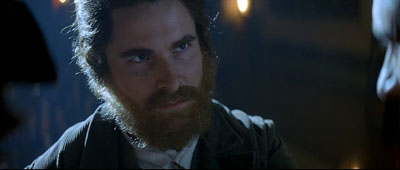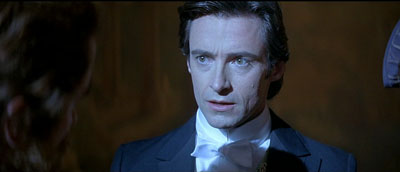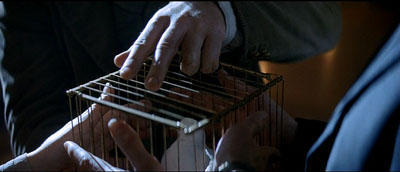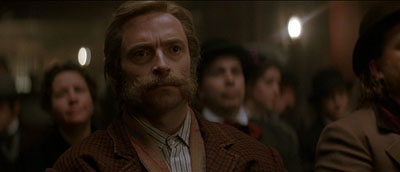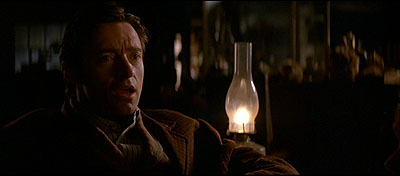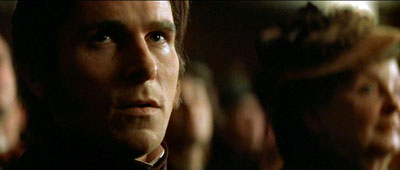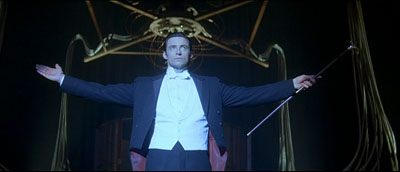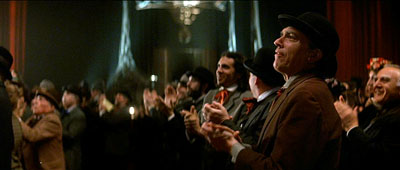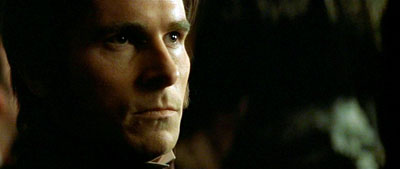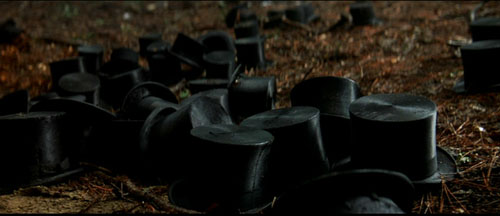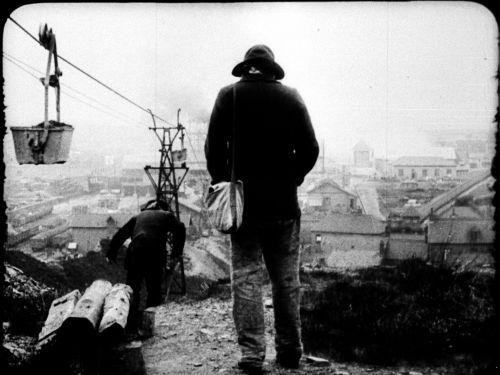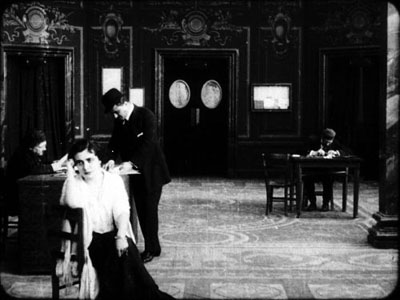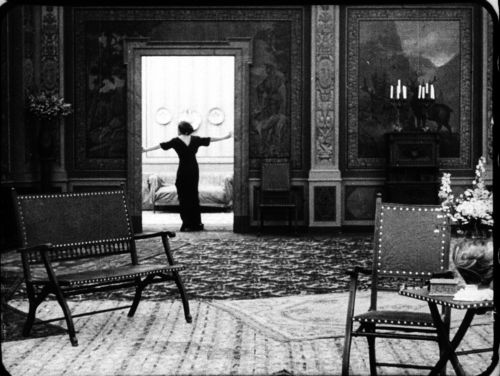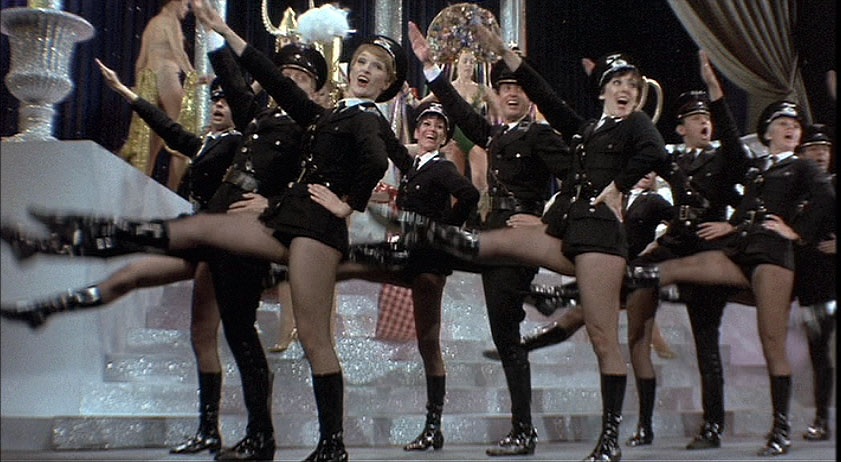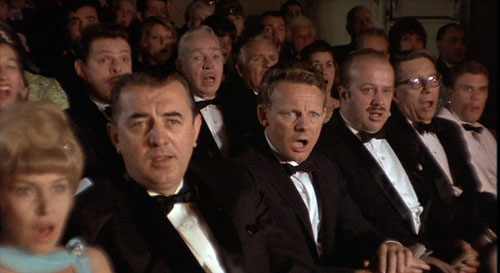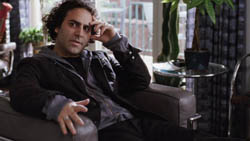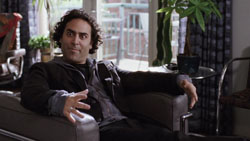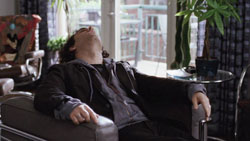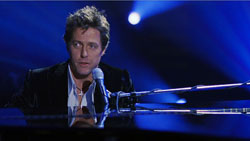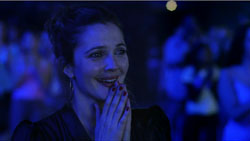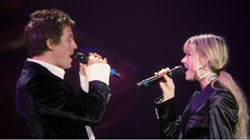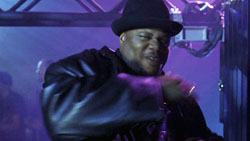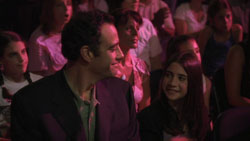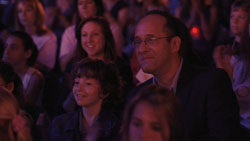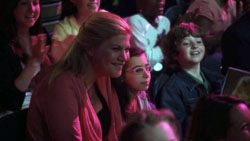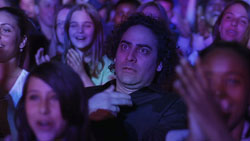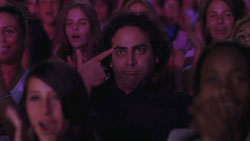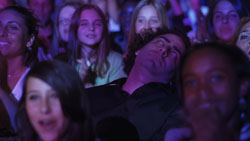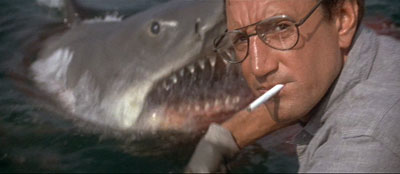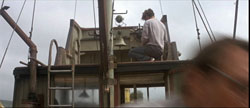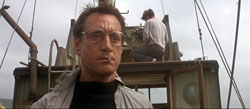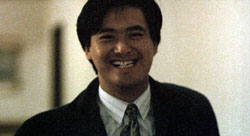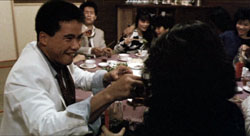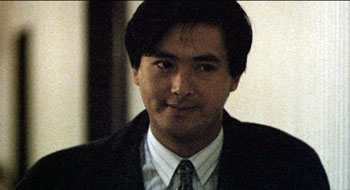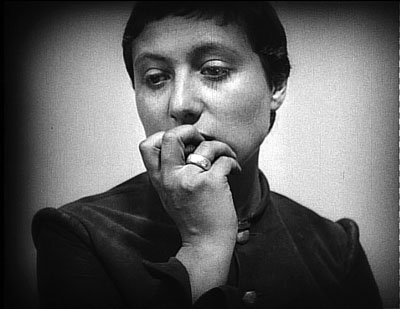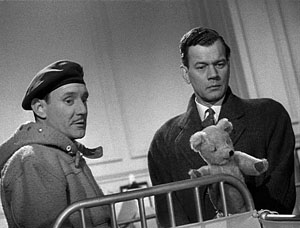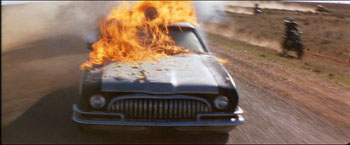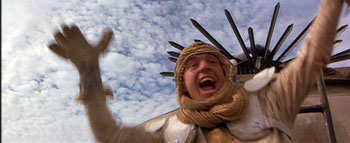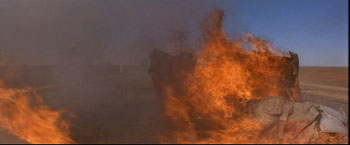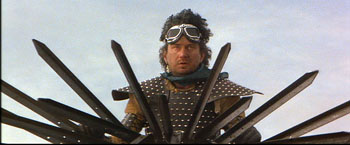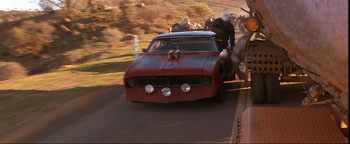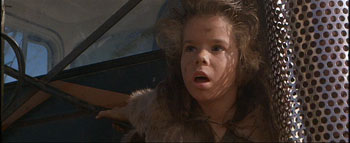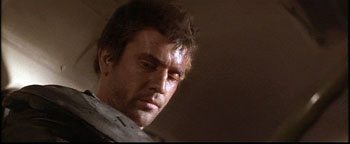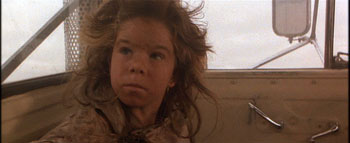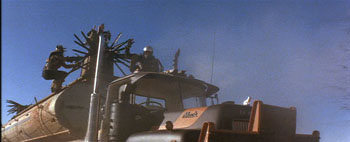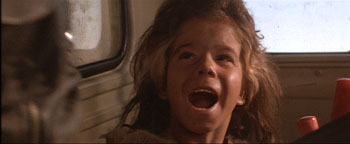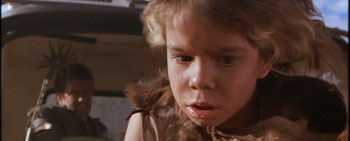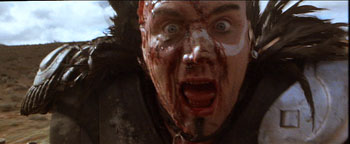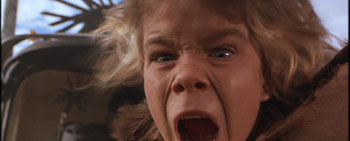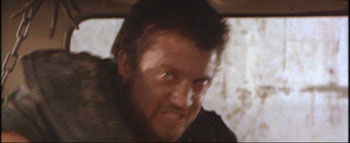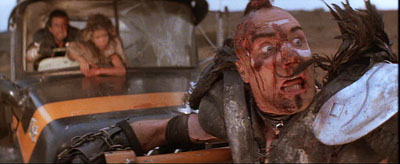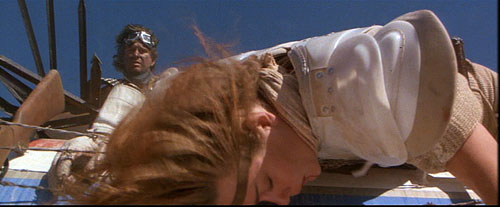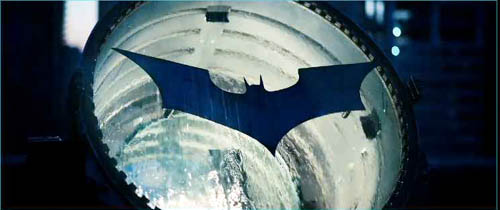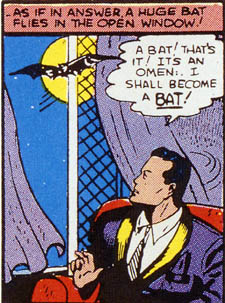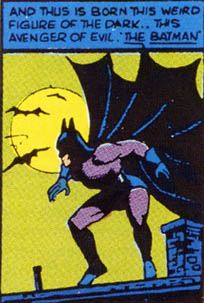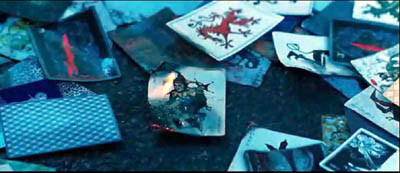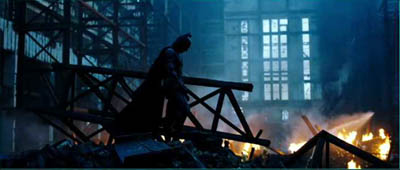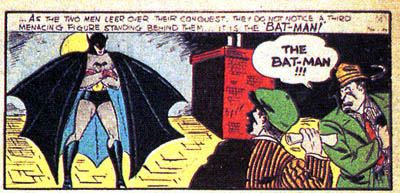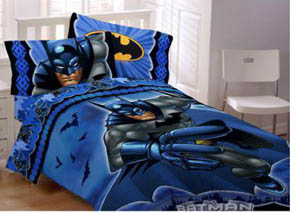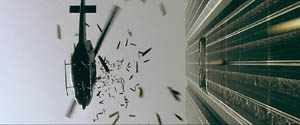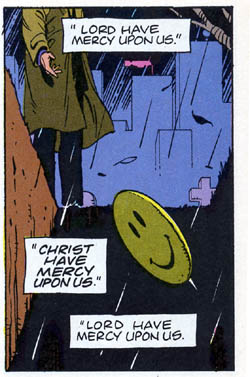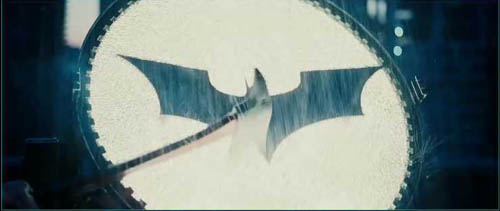Archive for the 'Film technique: Performance' Category
Niceties: how classical filmmaking can be at once simple and precise
DB here:
A film academic once complained that I was too preoccupied with “formalistic niceties.” So here I go again. But read no further if you haven’t seen Christopher Nolan’s The Prestige.
Dueling magicians: The film’s premise might be considered high-concept. In turn-of-the-century London, two young conjurers launch their careers with different attitudes toward their craft. Robert Angier favors audacious showmanship, while Alfred Borden is committed to finding a trick that will baffle the experts. Their rivalry is ignited when Alfred accidentally kills Angier’s wife during a dangerous underwater stunt. Their struggle peaks around each one’s supreme trick: transporting himself from one point to another instantaneously.
The item that attracts my attention today is established in the film’s opening sequence. As the voice of Cutter (Michael Caine) explains a magic trick’s three acts, we see a climactic confrontation between the competitors. Hoping to discover Robert’s secret, Alfred watches the Real Transported Man performance from the audience.
As Cutter’s narration mentions “a man,” the camera picks out Alfred in the crowd. Cut to Robert onstage, a shift that establishes the two as our protagonists.
What interests me is the view of the bearded Alfred: a medium-shot framing him nearly in profile facing right. This framing will be repeated, but varied, when Alfred’s voice-over diary entry introduces both him and Robert as apprentices, working as audience shills for another magician:
We were two young men at the start of a great career—two young men devoted to an illusion, who never intended to hurt anyone.
The new shot parallels the introduction of Alfred in the first scene, but varies it. Again we see Alfred in the audience, but now without a beard, and the camera tracks rightward to show Robert in another row.
In this sequence, our protagonists are connected by a camera movement rather than the cut employed in the opening. The two men’s reactions—Robert grinning (his wife is onstage), Alfred more pensive—add to the characterizations that we will see played out.
This simple camera motif gets varied further in the course of the film. The disastrous immersion illusion that drowns Robert’s wife is initiated by another tracking shot of the two men in the audience, a variation of the earlier shot.
The new combination starts with Robert and ends on Alfred. At this point, not only are the two men linked but they replace one another. If you want to push your luck, you could say that this variant quietly affirms the film’s overall dynamic of substitution (doubles, twins, clones).
Earlier, a contrasting way of showing the men in an audience is given us when they attend a performance of the wizard Chung Ling Soo. Cutter provides a dialogue hook, warning Robert that “the blokes at the ends of row three and four” can see him kissing his wife’s leg.
Cut to our protagonists, sitting at the end of a row watching the Chinese magician.
A nicety: Now the men are sitting side by side and facing left rather than right. Just through camera placement and character position, we know we’re in a different performance, one in which our apprentices play no role.
As they study the trick, Nolan gives us another characterizing shot: Robert is amazed, but Alfred grins: He’s worked out Chung’s secret.
What would have happened if Nolan had framed the men sitting apart and/or facing to the right? For an instant we might have thought we were back in the act they shill for. Simple but reiterated differences assure immediate comprehension: medium shot/ long shot, looking rightward/ looking leftward, men in different rows/ men in the same row. Just as the repeated framings of their own act clarify the situation, so do these little polarities. Call it redundancy, if you like, but it’s also precision and economy.
With Julia’s death, the men become enemies. But each will still slip into the audience of the other’s performances. From now on, the magician is always on the right, the onlooker on the left. Nolan and company could have handled their rivalry in camera setups that exactly mimic the early ones. Instead, a new pattern of parallels comes into play, building on the earlier ones but different enough to heighten the symmetries.
The new pattern is set up by restricting our range of knowledge. First, we are attached to Alfred when he performs his bullet catch in a barroom theatre. Robert, seeking vengeance for Julia’s drowning, steps up to spoil the trick, but we don’t know he’s there until Alfred does, and then it’s too late.
Similarly, we’re restricted to Robert’s range of knowledge when he tries to execute his disappearing dove trick. Only when Alfred is about to trigger the collapsing cage—killing the dove and wounding a lady from the audience—does Robert realize that his adversary has struck back.
Another nicety: The two shots of each man in similar disguises, seen in 3/4 view, reset the stylistic parameters. But the image of the bearded Alfred is given extra punch through a tilt up from his missing fingers–the result of the parallel, bullet-catch scene before.
The whole pattern shifts yet again when Robert sneaks in to watch Alfred’s Transported Man illusion. We get a shot of him (in a beard again) that fuses two of the cues from the earlier scenes: He’s in the audience, as in the early sequences, but he’s shown from an angle congruent with that of the earlier beard shots.
And perhaps we can take the shot of Robert at home, telling of his amazement at Alfred’s illusion, as an echo of the initial prototype: A magician staring intently rightward at a dazzling trick played out offscreen, but now in memory.
Robert returns from Colorado with the Tesla-designed “Real Transported Man,” and Alfred’s visit to watch the stunt reworks the givens of this pattern yet again. Alfred is seated, minimally disguised, in the standard audience spot looking right, but he is not in profile and the camera position is much closer than before. The answering shot of Robert onstage recalls the gesture we saw at the film’s outset and anticipates what we will see when that opening scene is replayed, with the wicked Alfred climbing onstage.
At the close of the trick, yet one more variant: Robert appears in the rear balcony and the crowd all turns to watch him off left.
After a glance back, Alfred turns away, looking right–the first time any character has flinched from the performance. His puzzlement is mixed with anger (at last a trick he can’t see through), a less charitable response than we saw in Robert’s stunned fireside recollection of Alfred’s Transported Man.
The things held constant, such as camera placement and position in the locale, set off the differences in characters’ disguises and reactions, while this shot carries faint echoes of our very first view of Alfred during Cutter’s voice-over monologue. That view, and its answering shot of Robert in the spotlight, will recur when Robert’s pseudo-death is replayed.
Nolan’s audacious film is built out of more marked parallels than these, but I wanted merely to highlight the ups and downs of one small pattern. Many films work varied repetitions like these into their shot-by-shot texture. Back in the 1930s, Eisenstein saw this possibility clearly, as I try to show in my book on his work. In the 1960s and 1970s, Raymond Bellour called our attention to such patterns in films by Hitchcock, Hawks, and Minnelli. His collection of essays The Analysis of Film includes pioneering studies of how fine-grained such things can become.
I wouldn’t go as far as Bellour does in seeing varied repetition as the motor force of classical filmmaking, but it surely plays an important role. What he takes as a manifestation of pure textual difference I’m inclined to psychologize: these differences help the audience understand, usually without awareness, the ongoing narrative dynamic and have the extra payoff of creating tacit narrative parallels. But from either perspective, object-centered or response-centered, studying such microforms is enlightening. It’s a way to understand films as wholes, dynamic constructions that shift their shapes across the time of their unfolding. Moreover, by examining things this closely, we can try to understand not only how this or that film works, but how this or that film relies on principles distinctive of a filmmaking tradition. Consider this another plug for poetics.
I’d add that such principles neatly fuse two pressures: toward narrative coherence and comprehension on the one hand, and toward production efficiency on the other. It’s cheaper and easier to repeat camera setups if you can. Artistic economy and financial economy can work together, nicely.
Speaking of repetitions….
Acting up
Germinal (1913).
DB here:
Film performance is notoriously difficult to analyze. We don’t lack zesty celebrations of actors; I think especially of Richard Schickel on Doug Fairbanks and Gary Giddins on Jack Benny and Bob Hope (praised in an earlier entry). But we have long found it difficult to penetrate actors’ secrets with the same precision that we bring to editing or framing or a film’s musical score.
Actors’ performances don’t offer themselves in neat slices, the way that shots come to us. There isn’t a firm notational system that lets us capture performances the way that scores can pick out important patterns in music.
Moreover, it’s hard to dissect something that seems so evanescent, so direct, and so natural. When we see someone smile on the bus or at a party, we react immediately and without any apparent thought. When someone smiles in a movie, we’re tempted to say that we respond just as directly. But then, what is acting? Just doing what comes naturally?
Acting is clearly an art and a craft. Not everyone can do it, and comparatively few do it well. So if there is a skill or a technique involved, surely acting goes beyond ordinary behavior. And if as in other arts there are creative choices involved, there is likely to be a menu of options to be chosen from. Some of those options are likely to be conventions sanctioned by tradition. How strongly, then, is acting conventionalized? If it’s conventionalized to some degree, we should be able to analyze it.
A small-scale debate has gone on for some years in film studies about whether film acting is heavily conventionalized, even coded. Advocates of the coding view point to the fact that acting styles vary in different places and change across time. What does Kabuki performance have in common with Method acting? It’s hard to claim that there is a universally realistic acting style that naturally represents human behavior. Against this, others have argued that even if there is no absolute and unchanging standard of realism, we can speak of more or less realistic aspects of performance. Some styles, like Method are just less artificial than others, like Kabuki—even if both are somewhat stylized with respect to realistic behavior.
My own view, explored in Poetics of Cinema, is that performance traditions streamline or stylize a common core of widely shared human behaviors. In everyday life, smiling expresses happiness and/or serves as a social signal of openness. We’re unlikely to find a distant culture in which smiling expresses rage. (Of course we can have an instance of smiling concealing rage, but that would acknowledge the difference between the two states.) Some acting traditions, like Kabuki, retain certain common behaviors like weeping or proud walking, but make them more dancelike. Other acting traditions stylize core behaviors in different ways–the mumble of the Method, or the comic double-take. The differences lie in what aspects of facial expressions, gestures, gait, and the like are on the tradition’s menu, and how they become “streamlined” for expressive purposes and spectatorial uptake.
In short, I’m a moderate constructivist about such matters. I agree that we have to learn to comprehend performances in different traditions. But our learning is fast and spontaneous, not at all like learning Morse code or English, because we already have strong hunches about what a frown or a wail might express. Frowning or wailing are likely to be contingent universals of human behavior. An intuition about the meaning of the performance guides us to recognize the more stylized aspects of the presentation. When Cesare coasts along walls in The Cabinet of Dr. Caligari, we take that to be a stylized representation of the act of stalking. That construal relies on the hunch that he’s doing something we already understand–stalking–in an unusual way. Although sometimes we might have to revise our intuitions about the meaning, those intuitions serve as a point of departure. (Where do our intuitions ultimately come from? Short answer: The evolution of humans as a social species.) E. H. Gombrich put it well: “It is the meaning which leads us to the convention and not the convention which leads us to the meaning.”
Assunta Spina (1915).
The faculty and alumni of the Film Studies program here at Wisconsin keep in touch through a (closed) listserv, and thanks to Jonathan Frome we also have a wiki, to be found here. It’s just starting to fill up, mostly with ideas for teaching and examples of sample sequences to illustrate film techniques. But now the wiki has gained striking essays on acting from two scholars of early cinema.
Ben Brewster and Lea Jacobs’ book, Theatre to Cinema, took on the problem of what early feature films owed to the stage, and they concluded: Quite a lot. But instead of condemning this tradition as “uncinematic,” as most historians have, they showed that a highly engaging form of cinema arose by reshaping theatrical traditions. Specifically, Ben and Lea examined how “situational” plotting principles were carried into film, and they discussed film’s debt to the “pictorialist” drama of the nineteenth century. Many scholars had argued that melodramatic theatre was replaced by the Naturalist theatre, derived from the literary movement associated with Émile Zola. But Lea and Ben argued that a pictorialist conception of theatre and its modified form in early feature films cut across this distinction. A film that was avowedly Naturalist in plot or theme could maintain conventions of earlier forms.
Consequently, they argued that film acting of the period, even when it seemed to be moving toward greater realism, was still building on the stereotyped expressions, gestures, and attitudes of pictorialist theatre. Actors were called upon to execute vivid stage tableaus. Standard gestures had to be imbued with fresh emotional intensity, and actors were expected to move gracefully from one expressive picture to another.
Now Ben and Lea have extended their book’s argument in two in-depth studies posted on the UW wiki. Ben’s essay examines that great Capellani film Germinal (1913) and shows that it often perpetuates the poses and expressions of pictorialism, while also scaling them down. Lea tackles the work of the diva Francesca Bertini, including an analysis of the wonderful Assunta Spina (1915). Her piece is a companion to Ben’s. She writes:
While I do not doubt that the plot of Assunta Spina fits under the rubric of naturalism, and that the acting and staging of some scenes in the film also show the influence of naturalism in the theatre, it seems to me that Bertini’s technique (and incidentally that of [Asta] Nielsen as well) is more reminiscent of Bernhardt than it is of the Duse, and that the blocking and use of gesture in the film is largely governed by what Brewster and I have discussed in terms of “pictorialism” in acting.
By considering 1910s performance as a modification of theatrical poses, attitudes, and staging conventions, Jacobs and Brewster are led to remarkably detailed analyses. They have studied the conventions of acting at that period, and because they are alert to standard bits of business, so they are able to show fine points of performance that we would ordinarily miss.
They’re also able to hold the realism/ artifice dispute in suspension by concentrating on particular historical traditions. They shrewdly note that as acting styles change, the newer one is likely to be praised as more realistic than the styles it supplants. In turn, that style will be considered artificial when a still newer one comes along. For this reason, Method acting may seem less realistic and more artfully contrived today than it did in the 1950s.
Apart from the subtle discussion of acting styles, one merit of these essays is that they recognize how films can take bits and pieces of different traditions and modify them for particular ends. I’m sympathetic to this perspective. For instance, I still think that many of today’s Hollywood films, despite their contemporary look and feel, draw on principles of narration and plot structure that we can find in classic American studio cinema.
In addition, you ought to visit the site to see how detailed their analyses are and how extensively they draw on frame stills. Indeed, one reason they published these pieces online was that no academic film journal could have accommodated so many illustrations. So much the better for us. The frames, taken from 35mm prints with a Nikon lens and negative film, are among the most beautiful you’ll find on the Internets. I swiped some here.
Sangue bleu (1914).
The quotation from E. H. Gombrich comes from his essay “Image and Code: Scope and Limits of Conventionalism in Pictorial Representation,” in The Image and the Eye: Further Studies in the Psychology of Pictorial Representation (Ithaca: Cornell University Press, 1982), 289.
Kristin has written a couple of blog entries concentrating on performance, here and here.
They’re looking for us
DB again:
Perhaps you consider Music and Lyrics (2007) a bit of fluff. Bear with me. Apart from offering an ingratiating parody of 1980s music videos, which at the end gets replayed as a parody of 1990s Pop-Up Video, this movie provides a nice example of a technique that film viewers tend to enjoy.
Alex Fletcher, a has-been pop singer, gets a chance to revive his career by writing a love song for Cora Corman, current goddess of teenyboppers. Alex can dash off a melody but he needs a lyricist. His agent has advised him to try to collaborate with the “very hip, very edgy” Greg Antonsky. Their first meeting doesn’t go well. Greg’s lyrics, rhyming witch and bitch, don’t suit Alex’s more romantic style, and Sophie, Alex’s plant-tender, keeps interjecting sweeter lines. After first eyeing Sophie lecherously, Greg decides she’s a simpleton. He dashes out, condemning Sophie and Alex as sentimental fools: “You people disgust me!”
As written, the character of Greg the lyricist is only mildly funny, but the insert shots of actor Jason Antoon raise the comedy thermostat. With his lowered brow and glaring, slightly unfocused eyes, Greg tries to play the badass, but his aggressiveness comes off as egotistical pettiness.
The cutting relies on single shots of each character, in keeping with today’s style of intensified continuity editing. This ensures that we track every character’s facial expression. When Sophie first interrupts, Greg glares, then lolls his head backward; his time is too important to spend with these losers.
In all, Greg is onscreen for about three minutes, and the plot continues without him.
Eventually, Alex and Sophie break up because Alex is prepared to let Cora turn their song into a sleazy number. The climax comes at Cora’s concert, when Alex appears onstage and sings a tune he composed for Sophie: “Don’t Write Me Off.” At the song’s close, we get a shot of him at the piano followed by several reaction shots in the audience, with Sophie’s close-up favored.
After a backstage reconciliation between Alex and Sophie, the film’s second plotline is resolved. Cora performs the number she asked the team to compose, but it’s played the way Sophie had wanted. The up-tempo melody brings Alex and Cora onstage together and then, as the third verse begins, ties together the secondary characters in a series of reaction shots. We first see an African-American backstage handler, whose vigorous swipe of his arm launches a string of smiling responses.
We get shots of Alex’s agent and his daughter, then Sophie’s brother-in-law and his son, and Sophie’s sister and their kids.
Their responses celebrate both the romantic couple’s success and the sincere emotion that the song elicits. This aura of good feeling is confirmed negatively by one more reaction shot.
It is the sort of satisfying surprise that Hollywood often trades on. After being offscreen and out of mind for eighty minutes, arrogant Greg returns. We didn’t see him come to the concert; we didn’t know he was there; we had likely forgotten he existed.
This shot is agreeable because it keeps Greg’s sourness consistent. A more kindly film would show him smiling begrudgingly, won over by the authentic sweetness of the music. But instead he mimics blowing his brains out and lolls his head back as he did before.
Greg’s appalled reaction to the song confirms our initial judgment of his character and our sense of the song’s unpretentious sincerity.
If you’re like me, this unexpected four-second shot makes you laugh. The director, Marc Lawrence, has followed tradition by including humor in a scene of high sentiment, not diluting the happy tone but reinforcing it. Call it corn, hokum, or tosh; claim that it hits below the belt. I won’t disagree. But the mixture of laughter and sentiment works on us like a reflex. And Greg’s response inoculates the movie against seeming wholly naive or cloying. As so often, Hollywood lets us have things, emotionally speaking, both ways.
This response is accomplished through one of the most powerful weapons in the filmmaker’s arsenal. A director can disarm our emotions through a single reaction shot.
Recoil and reaction
The same sort of dynamic is at work in a less lightweight scene. Everybody remembers the moment in Jaws when Sheriff Brody, scooping chum over the side of the Orca, is taken unawares by the arrival of Bruce the shark, bursting out from the background.
But Spielberg, who understands audience response, follows this nifty shot with a topper. In a reverse-angle framing, Brody’s head snaps into the shot with the abruptness of Wile E. Coyote reacting to the Road Runner.
The sudden thrust and halt of Brody’s head sells his stunned facial expression. Our shock at Bruce’s entrance is joined by our uncontrollable urge to giggle at Brody’s cartoonish trajectory and the sheer stupefaction on his face—not fear yet, but rather a recognition of the sheer enormity of the adversary. From here on, his refrain, “We’re gonna need a bigger boat,” will remind us that unlike his shipmates, he has been very nearly head to head with the Great White.
The reaction shot seems like a simple technique. Doesn’t it just spell out or repeat what’s happening? Sometimes, but not always. As we’ve just noticed, it can let the director layer the effect of a scene. Once an action has gained a particular emotional coloring, the reaction shot can add a different tint. The romantic exhilaration of the song in Music and Lyrics is heightened by Greg’s bad-natured gaping. Bruce’s fearsome movement forward is balanced by Brody’s recoil and his comically fixed stare into space.
And sometimes the layering and balancing can take place within the reaction itself. In John Woo’s A Better Tomorrow, Mark Lee enters a restaurant and pretends to be playfully feeling up a woman in the corridor. But he’s actually planning to kill a gangland leader, who’s partying in a room off right. First shot: Mark looks winsomely off after the retreating woman. Cut to the leader celebrating.
We might expect that the return to Mark will show his fake expression fade into a sincere one. Instead, Woo simply shows a new expression on Mark’s face as he listens to the party offscreen right.
Eisenstein admired Asian theatre for its “acting without transitions”; here the brief shot of the gangster eliminates the emotional transition taking place on Chow Yun-fat’s face. Mark’s determination is all the more forceful for being so abruptly presented, as if a mask has simply fallen away.
Mirrors like big faces
Prototypically, the reaction shot shows a face expressing emotion. The technique trades on our ability to grasp expressions, often very quickly. We’ve perfected this skill since birth, and there’s evidence that newborns are pre-wired to detect and respond to certain expressions, especially from mom. Exposure to actual expressions in their daily lives allows children to refine and tune this proclivity. So one part of the reaction-shot technique is a very well-practiced skill that cinema has exploited.
Some recent findings in neuroscience suggest that reactions portrayed onscreen can arouse us deeply. Back in 1995, researchers observed that one sort of nerve cell was activated in a macaque monkey’s brain when the monkey reached for a peanut. No surprise there, since that cortical area is known to be a region involved in planning and initiating bodily movements. But researchers noticed that the same cells fired when the macaque watched another monkey reach for a peanut. Soon researchers were finding clusters of these “mirror neurons” in human beings, strongly suggesting that when we see someone do something, our brain responds as if we were doing it ourselves.
Since facial expressions involve stretching and relaxing facial muscles, it’s possible that mirror neurons play a role in arousing empathy. The mere sight of someone smiling or frowning can trigger some of the same neural events as when we smile or frown ourselves. We’ve all experienced a sort of “motor mimicry” when a radiant smile makes us involuntarily smile too. In one set of experiments, neuroscientists found that people’s mirror neurons responded the same way to film shots of disgusted faces as they did to disgusting smells in real life. Reaction shots may gain their strength from not merely our ability to understand facial expressions but the power of facial expressions to trigger in us an echo of the emotion displayed. With a string of shots of smiling faces, as in the Music and Lyrics concert, our own impulse to smile would have to be put down by force of will.
Of course, characters can display their reactions onscreen without being shown in reaction shots in the modern sense. Many films of the earliest years portray the actors in a long-shot framing of the entire action. Realizing that our eyes will turn to areas of high information content like hands and faces, directors often staged and lit the action for easier pickup of the faces. You can see examples of that in this and this earlier entry.
But the reaction shot as such implies cutting, either breaking down the scene through analytical editing or building up a scene from details (so-called constructive editing). In the 1910s, directors began systematically creating a scene from separate shots. (For more on this development, go here and here.) In this approach, particularly as practiced in Hollywood, a person’s facial expression could become part of an ongoing suite of shots, each concentrating on one item of information. Thanks to cutting, the facial reaction could be underscored, sharpened, and timed for best effect. The suddenness of the cuts to reactions in Music and Lyrics and Jaws is central to their effect.
A reaction shot need not be a close-up, and it need not show only one person. One of the funniest reaction shots in cinema, I think, occurs in The Producers, when Brooks cuts from the “Springtime for Hitler” number to the audience’s frozen, slack-jawed response. This long-shot framing suggests that we should think of the reaction shot as a functional category; it’s a role that various types of shots can fulfill.
Still, the development of the close-up as a technique is tied its function of showing responses. In silent cinema the people’s faces, reacting to the flow of story action, are providing a continual measure of the characters’ states of knowledge and feeling. Entire scenes could be played out as a string of intercut reaction shots, as Kuleshov proved in theory and the Americans showed in practice. In Dreyer’s La Passion de Jeanne d’Arc, as above, the reaction shot is virtually the dominant technique. And point-of-view cutting patterns integrated the isolated close-up reaction shot with images showing what the character was seeing.
With the emergence of sound cinema, you could argue, the reaction shot was briefly demoted. In early talkies, scenes were played in wider shots, and cut-in reactions could, in the hands of inept directors, seem brusque interruptions. But fairly quickly the reaction shot returned, usually as a stressed moment in a scene built out of more distant and neutral framings. Nowadays, with directors using fewer ensemble shots and disinclined to frame actors in prolonged, balanced two-shots, the reaction shot has retained its place in popular moviemaking.
Apart from registering a character’s response, the reaction shot also offers a broader take on the action. Noël Carroll has suggested that the reaction shot can steer us toward the proper way we should construe the whole fictional world we’re witnessing.
For instance, both fantasy fictions and horror stories feature monstrous beings. But in fantasy a troll or griffin might be benevolent. In large part, the way we construe the monster will depend on how the other characters respond. If the hero or heroine looks kindly upon the creature, as in The Golden Compass or Pan’s Labyrinth, then we know we’re not supposed to be horrified. Carroll explains:
A creature like Chewbacca in the space opera Star Wars is just one of the guys, though a creature gotten up in the same wolf outfit, in a film like The Howling, would be regarded with utter revulsion by the human characters.
Reaction shots instruct us in how to respond to the fictional world as a whole.
So robust is the reaction shot that it can stand on its own, if it gets a bit of help from context. In The Third Man, Holly Martins has been trying to defend his old pal Harry Lime from accusations of crooked dealing. When Holly visits a hospital ward, however, he sees what Harry’s bogus penicillin has done to babies. But we don’t; director Carol Reed shows us only Holly’s dispirited reaction.
As Clive James puts it:
The movie’s whole moral structure pivots on that one point. Unless we are convinced that the two men are seeing horrors, there would be no justification for Holly Martins’ delivering the coup de grace to his erstwhile friend.
A chase through feral eyes
Reaction shots can modulate across a scene, as the characters’ feelings change. But I’m also impressed by the way a scene can build emotion by developing from flat, affectless reaction shots to more intense ones. A good example is the long climactic highway chase in Road Warrior.
The outlaw gang is pursuing a tanker truck they think is full of gasoline, while Max, the Feral Kid, and a few warriors ride the monster truck. The scene’s stunts, acrobatics, and vehicular mayhem are impressive, but these qualities have been replicated in a lot of movies. What gives the Road Warrior scene a special pungency are the many reaction shots of the characters mounted on the truck. For the most part we’re aligned with them both physically and emotionally, and we are allowed to share their moment-by-moment reactions to each turn of events.
Early in the sequence, when the tanker team knocks out some pursuers, we get unequivocal reactions of jubilation.
But as the marauding gang gains control of the tanker, the reactions of the team turn to glum, nervously comic dismay.
The scene’s emotional graph is traced most thoroughly in the reactions of the Feral Kid. Throughout most of the film he has two expressions—neutral and fierce. Clinging to the side of the truck, he watches the steady progress of the pursuers with mild apprehension. If he started to shriek with fear now, the scene would have nowhere to build to. I think that we’re inclined to read his expressions as signs of his characteristic stoicism.
But when Max starts to dispatch gang members with his shotgun, the Kid lets out a hoot of pleasure. At one point a thug sends an arrow into the cab. No emotional response from Max or the Kid.
Max blows the thug off the roof of the cab. The kid crows.
The Kid’s laugh licenses us to laugh too—at the businesslike crispness of Max’s response and at the sheer infectiousness of the Kid’s admiration. (Our mirror neurons are presumably working overtime.)
The next phase in the arc comes when Max orders the Kid to crawl out onto the truck hood to retrieve the shells. Now the boy’s expression becomes cautious and a little fearful.
He sprawls on the hood and grabs the shells. At that moment Wez pops up, clinging to the front grille, and we get two lunging reaction shots.
If the Feral Kid had shrieked earlier in the scene, these cuts would have less impact. The high point of the drama is matched by the fact that finally, something has happened to scare the bejesus out of this boy. Even Max has lost his cool, wrenching the wheel ferociously.
Soon, in another laugh-inducing reaction, Wez realizes that he is point man in the crash that is soon to come.
You couldn’t ask for a better example of how reaction shots can be more than a one-off tactic. In Music and Lyrics, the quick insert of Greg gave a little jab to the scene. In Road Warrior, the Feral Kid’s changing reactions add an emotional curve to the progression of the chase. Without him, the scene would lack a whole layer of feeling.
There’s much more to say about the reaction shot. We’d want as well to talk about films that withhold information about characters’ reactions—by using enigmatic or ambiguous reaction shots, or by eliminating reaction shots altogether. (Think Antonioni, Hou, Angelopoulos, Tarr, and others.) Maybe I’ll take those matters up in another entry. For now, let’s salute one of the most enjoyable and arousing dimensions of cinematic storytelling. It only seems simple.
My quotation from Noël Carroll comes from The Philosophy of Horror; or, Paradoxes of the Heart (New York: Routledge, 1990), 16.
Superheroes for sale
DB here:
After a day at the movies, maybe I am living in a parallel universe. I go to see two films praised by people whose tastes I respect. I find myself bored and depressed. I’m also asking questions.
Over the twenty years since Batman (1989), and especially in the last decade or so, some tentpole pictures, and many movies at lower budget levels, have featured superheroes from the Golden and Silver age of comic books. By my count, since 2002, there have been between three and seven comic-book superhero movies released every year. (I’m not counting other movies derived from comic books or characters, like Richie Rich or Ghost World.)
Until quite recently, superheroes haven’t been the biggest money-spinners. Only eleven of the top 100 films on Box Office Mojo’s current worldwide-grosser list are derived from comics, and none ranks in the top ten titles. But things are changing. For nearly every year since 2000, at least one title has made it into the list of top twenty worldwide grossers. For most years two titles have cracked this list, and in 2007 there were three. This year three films have already arrived in the global top twenty: The Dark Knight, Iron Man, and The Incredible Hulk (four, if you count Wanted as a superhero movie).
This 2008 successes have vindicated Marvel’s long-term strategy to invest directly in movies and have spurred Warners to slate more comic-book titles. David S. Cohen analyses this new market here. So we are clearly in the midst of a Trend. My trip to the multiplex got me asking: What has enabled superhero comic-book movies to blast into a central spot in today’s blockbuster economy?
Enter the comic-book guys
It’s clearly not due to a boom in comic-book reading. Superhero books have not commanded a wide audience for a long time. Statistics on comic-book readership are closely guarded, but the expert commentator John Jackson Miller reports that back in 1959, at least 26 million comic books were sold every month. In the highest month of 2006, comic shops ordered, by Miller’s estimate, about 8 million books (and this total includes not only periodical comics but graphic novels, independent comics, and non-superhero titles). There have been upticks and downturns over the decades, but the overall pattern is a steep slump.
Try to buy an old-fashioned comic book, with staples and floppy covers, and you’ll have to look hard. You can get albums and graphic novels at the chain stores like Borders, but not the monthly periodicals. For those you have to go to a comics shop, and Hank Luttrell, one of my local purveyors of comics, estimates there aren’t more than 1000 of them in the U. S.
Moreover, there’s still a stigma attached to reading superhero comics. Even kitsch novels have long had a slightly higher cultural standing than comic books. Admitting you had read The Devil Wears Prada would be less embarrassing than admitting you read Daredevil.
For such reasons and others, the audience for superhero comics is far smaller than the audience for superhero movies. The movies seem to float pretty free of their origins; you can imagine a young Spider-Man fan who loved the series but never knew the books. What’s going on?
Men in tights, and iron pants
The films that disappointed me on that moviegoing day were Iron Man and The Dark Knight. The first seemed to me an ordinary comic-book movie endowed with verve by Robert Downey Jr.’s performance. While he’s thought of as a versatile actor, Downey also has a star persona—the guy who’s wound a few turns too tight, putting up a good front with rapid-fire patter (see Home for the Holidays, Wonder Boys, Kiss Kiss Bang Bang, Zodiac). Downey’s cynical chatterbox makes Iron Man watchable. When he’s not onscreen we get excelsior.
Christopher Nolan showed himself a clever director in Memento and a promising one in The Prestige. So how did he manage to make The Dark Knight such a portentously hollow movie? Apart from enjoying seeing Hong Kong in Imax, I was struck by the repetition of gimmicky situations–disguises, hostage-taking, ticking bombs, characters dangling over a skyscraper abyss, who’s dead really once and for all? The fights and chases were as unintelligible as most such sequences are nowadays, and the usual roaming-camera formulas were applied without much variety. Shoot lots of singles, track slowly in on everybody who’s speaking, spin a circle around characters now and then, and transition to a new scene with a quick airborne shot of a cityscape. Like Jim Emerson, I thought that everything hurtled along at the same aggressive pace. If I want an arch-criminal caper aiming for shock, emotional distress, and political comment, I’ll take Benny Chan’s New Police Story.
Then there are the mouths. This is a movie about mouths. I couldn’t stop staring at them. Given Batman’s cowl and his husky whisper, you practically have to lip-read his lines. Harvey Dent’s vagrant facial parts are especially engaging around the jaws, and of course the Joker’s double rictus dominates his face. Gradually I found Maggie Gyllenhaal’s spoonbill lips starting to look peculiar.
The expository scenes were played with a somber knowingness I found stifling. Quoting lame dialogue is one of the handiest weapons in a critic’s arsenal and I usually don’t resort to it; many very good movies are weak on this front. Still, I can’t resist feeling that some weighty lines were doing duty for extended dramatic development, trying to convince me that enormous issues were churning underneath all the heists, fights, and chases. Know your limits, Master Wayne. Or: Some men just want to watch the world burn. Or: In their last moments people show you who they really are. Or: The night is darkest before the dawn.
I want to ask: Why so serious?
Odds are you think better of Iron Man and The Dark Knight than I do. That debate will go on for years. My purpose here is to explore a historical question: Why comic-book superhero movies now?
Z as in Zeitgeist
More superhero movies after 2002, you say? Obviously 9/11 so traumatized us that we feel a yearning for superheroes to protect us. Our old friend the zeitgeist furnishes an explanation. Every popular movie can be read as taking the pulse of the public mood or the national unconscious.
I’ve argued against zeitgeist readings in Poetics of Cinema, so I’ll just mention some problems with them:
*A zeitgeist is hard to pin down. There’s no reason to think that the millions of people who go to the movies share the same values, attitudes, moods, or opinions. In fact, all the measures we have of these things show that people differ greatly along all these dimensions. I suspect that the main reason we think there’s a zeitgeist is that we can find it in popular culture. But we would need to find it independently, in our everyday lives, to show that popular culture reflects it.
*So many different movies are popular at any moment that we’d have to posit a pretty fragmented national psyche. Right now, it seems, we affirm heroic achievement (Indiana Jones and the Kingdom of the Crystal Skull, Kung Fu Panda, Prince Caspian) except when we don’t (Get Smart, The Dark Knight). So maybe the zeitgeist is somehow split? That leads to vacuity, since that answer can accommodate an indefinitely large number of movies. (We’d have to add fractions of our psyche that are solicited by Sex and the City and Horton Hears a Who!)
*The movie audience isn’t a good cross-section of the general public. The demographic profile tilts very young and moderately affluent. Movies are largely a middle-class teenage and twentysomething form. When a producer says her movie is trying to catch the zeitgeist, she’s not tracking retired guys in Arizona wearing white belts; she’s thinking mostly of the tastes of kids in baseball caps and draggy jeans.
* Just because a movie is popular doesn’t mean that people have found the same meanings in it that critics do. Interpretation is a matter of constructing meaning out of what a movie puts before us, not finding the buried treasure, and there’s no guarantee that the critic’s construal conforms to any audience member’s.
*Critics tend to think that if a movie is popular, it reflects the populace. But a ticket is not a vote for the movie’s values. I may like or dislike it, and I may do either for reasons that have nothing to do with its projection of my hidden anxieties.
*Many Hollywood films are popular abroad, in nations presumably possessing a different zeitgeist or national unconscious. How can that work? Or do audiences on different continents share the same zeitgeist?
Wait, somebody will reply, The Dark Knight is a special case! Nolan and his collaborators have strewn the film with references to post-9/11 policies about torture and surveillance. What, though, is the film saying about those policies? The blogosphere is already ablaze with discussions of whether the film supports or criticizes Bush’s White House. And the Editorial Board of the good, gray Times has noticed:
It does not take a lot of imagination to see the new Batman movie that is setting box office records, The Dark Knight, as something of a commentary on the war on terror.
You said it! Takes no imagination at all. But what is the commentary? The Board decides that the water is murky, that some elements of the movie line up on one side, some on the other. The result: “Societies get the heroes they deserve,” which is virtually a line from the movie.
I remember walking out of Patton (1970) with a hippie friend who loved it. He claimed that it showed how vicious the military was, by portraying a hero as an egotistical nutcase. That wasn’t the reading offered by a veteran I once talked to, who considered the film a tribute to a great warrior.
It was then I began to suspect that Hollywood movies are usually strategically ambiguous about politics. You can read them in a lot of different ways, and that ambivalence is more or less deliberate.
A Hollywood film tends to pose sharp moral polarities and then fuzz or fudge or rush past settling them. For instance, take The Bourne Ultimatum: Yes, the espionage system is corrupt, but there is one honorable agent who will leak the information, and the press will expose it all, and the malefactors will be jailed. This tactic hasn’t had a great track record in real life.
The constitutive ambiguity of Hollywood movies helpfully disarms criticisms from interest groups (“Look at the positive points we put in”). It also gives the film an air of moral seriousness (“See, things aren’t simple; there are gray areas”). That’s the bait the Times writers took.
I’m not saying that films can’t carry an intentional message. Bryan Singer and Ian McKellen claim the X-Men series criticizes prejudice against gays and minorities. Nor am I saying that an ambivalent film comes from its makers delicately implanting counterbalancing clues. Sometimes they probably do. More often, I think, filmmakers pluck out bits of cultural flotsam opportunistically, stirring it all together and offering it up to see if we like the taste. It’s in filmmakers’ interests to push a lot of our buttons without worrying whether what comes out is a coherent intellectual position. Patton grabbed people and got them talking, and that was enough to create a cultural event. Ditto The Dark Knight.
Back to basics
If the zeitgeist doesn’t explain the flourishing of the superhero movie in the last few years, what does? I offer some suggestions. They’re based on my hunch that the genre has brought together several trends in contemporary Hollywood film. These trends, which can commingle, were around before 2000, but they seem to be developing in a way that has created a niche for the superhero film.
The changing hierarchy of genres. Not all genres are created equal, and they rise or fall in status. As the Western and the musical fell in the 1970s, the urban crime film, horror, and science-fiction rose. For a long time, it would be unthinkable for an A-list director to do a horror or science-fiction movie, but that changed after Polanski, Kubrick, Ridley Scott, et al. gave those genres a fresh luster just by their participation. More recently, I argue in The Way Hollywood Tells It, the fantasy film arrived as a respectable genre, as measured by box-office receipts, critical respect, and awards. It seems that the sword-and-sorcery movie reached its full rehabilitation when The Lord of the Rings: The Return of the King scored its eleven Academy Awards.
The comic-book movie has had a longer slog from the B- and sub-B-regions. Superman, Flash Gordon, and Dick Tracy were all fodder for serials and low-budget fare. Prince Valiant (1954) was the only comics-derived movie of any standing in the 1950s, as I recall, and you can argue that it fitted into a cycle of widescreen costume pictures. (Though it looks like a pretty camp undertaking today.) Much later came revivals of the two most popular superheroes, Superman (1978) and Batman (1989).
The success of the Batman film, which was carefully orchestrated by Warners and its DC comics subsidiary, can be seen as preparing the grounds for today’s superhero franchises. The idea was to avoid simply reiterating a series, as the Superman movie did, or mocking it, as the Batman TV show did. The purpose was to “reimagine” the series, to “reboot” it as we now say, the way Frank Miller’s The Dark Knight Returns re-launched the Batman comic. Rebooting modernizes the mythos by reinterpreting it in a thematically serious and graphically daring way.
During the 1990s, less famous superheroes filled in as the Batman franchise tailed off. Examples were The Rocketeer (1991), Timecop (1994), The Crow (1994) and The Crow: City of Angels (1996), Judge Dredd (1995), Men in Black (1997), Spawn (1997), Blade (1998), and Mystery Men (1999). Most of these managed to fuse their appeals with those of another parvenu genre, the kinetic action-adventure movie.
Significantly, these were typically medium-budget films from semi-independent companies. Although some failed, a few were huge and many earned well, especially once home video was reckoned in. Moreover, the growing number of titles, sometimes featuring name actors, fueled a sense that this genre was becoming important. As often happens, marginal companies developed the market more nimbly than the big ones, who tend to move in once the market has matured.
I’d also suggest that The Matrix (1999) helped legitimize the cycle. (Neo isn’t a superhero? In the final scene he can fly.) The pseudophilosophical aura this movie radiated, as well as its easy familiarity with comics, videogames, and the Web, made it irrevocably cool. Now ambitious young directors like Nolan, Singer, and Brett Ratner could sign such projects with no sense they were going downmarket.
The importance of special effects. Arguably there were no fundamental breakthroughs in special-effects technology from the 1940s to the 1960s. But with motion-control cinematography, showcased in the first Star Wars installment (1977) filmmakers could create a new level of realism in the use of miniatures. Later developments in matte work, blue- and green-screen techniques, and digital imagery were suited to, and driven by, the other genres that were on the rise—horror, science-fiction, and fantasy—but comic-book movies benefited as well. The tagline for Superman was “You’ll believe a man can fly.”
Special effects thereby became one of a film’s attractions. Instead of hiding the technique, films flaunted it as a mark of big budgets and technological sophistication. The fantastic powers of superheroes cried out for CGI, and it may be that convincing movies in the genre weren’t really ready until the software matured.
The rise of franchises. Studios have always sought predictability, and the classic studio system relied on stars and genres to encourage the audience to return for more of what it liked. But as film attendance waned, producers looked for other models. One that was successful was the branded series, epitomized in the James Bond films. With the rise of the summer blockbuster, producers searched for properties that could be exploited in a string of movies. A memorable character could tie the installments together, and so filmmakers turned to pop literature (e.g., the Harry Potter books) and comic books. Today, Marvel Enterprises is less concerned with publishing comics than with creating film vehicles for its 5000 characters. Indeed, to get bank financing it put up ten of its characters as collateral!
Yet a single character might not sustain a robust franchise. Henry Jenkins has written about how popular culture is gravitating to multi-character “worlds” that allow different media texts to be carved out of them. Now that periodical sales of comics have flagged, the tail is wagging the dog. The 5000 characters in the Marvel Universe furnish endless franchise opportunities. If you stayed for the credit cookie at the end of Iron Man, you saw the setup for a sequel that will pair the hero with at least one more Marvel protagonist.
Merchandising and corporate synergy. It’s too obvious to dwell on, but superhero movies fit neatly into the demand that franchises should spawn books, TV shows, soundtracks, toys, apparel, and so on. Time Warner’s acquisition of DC Comics was crucial to the cross-platform marketing of the first Batman. Moreover, most comics readers are relatively affluent (a big change from my boyhood), so they have the income to buy action figures and other pricy collectibles, like a Batbed.
The shift from an auteur cinema to a genre cinema. The classic studio system maintained a fruitful, sometimes tense, balance between directorial expression and genre demands. Somewhere in recent decades that balance has split into polarities. We now have big-budget genre films that made by directors of no discernible individuality, and small “personal” films that showcase the director’s sensibility. There have always been impersonal craftsmen in Hollywood, but the most distinctive directors could often bring their own sensibilities to projects big or small.
David Lynch could make Dune (1984) part of his own oeuvre, but since then we have many big-budget genre pictures that bear no signs of directorial individuality. In particular, science-fiction, fantasy, and superhero movies demand so much high-tech input, so much preparation, so many logistical tasks in shooting, and such intensive postproduction, that economy of effort favors a standardized look and feel. Hence perhaps the recourse to well-established techniques of shooting and cutting; intensified continuity provides a line of least resistance. A comic-book movie can succeed if it doesn’t stray from the fanbase’s expectations and swiftly initiates the newbies. Not much directorial finesse is needed, as 300 (2007) shows.
The development of the megapicture may have led the more talented directors to the “one for them, one for me” motto. Think of the difference between Burton’s Planet of the Apes or even Sweeney Todd and, say, Ed Wood or Big Fish. Or think of the moments of elegance in Memento and The Prestige, as opposed to the blunt handling of Batman Begins and The Dark Knight.
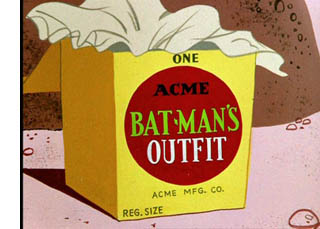 Shock and awe in presentation. The rise of the multiplex meant not only an upgrade in comfort (my back appreciates the tilting seats) but also a demand for big pictures and big sound. Smaller, more intimate movies look woeful on your megascreen, and what’s the point of Dolby surround channels if you’re watching a Woody Allen picture? Like science-fiction and fantasy, the adventures of a superhero in yawning landscapes fill the demand for immersion in a punchy, visceral entertainment. Scaling the film for Imax, as Superman Returns and The Dark Knight have, is the next step in this escalation.
Shock and awe in presentation. The rise of the multiplex meant not only an upgrade in comfort (my back appreciates the tilting seats) but also a demand for big pictures and big sound. Smaller, more intimate movies look woeful on your megascreen, and what’s the point of Dolby surround channels if you’re watching a Woody Allen picture? Like science-fiction and fantasy, the adventures of a superhero in yawning landscapes fill the demand for immersion in a punchy, visceral entertainment. Scaling the film for Imax, as Superman Returns and The Dark Knight have, is the next step in this escalation.
Too much is never enough. Since the 1980s, mass-audience pictures have gravitated toward ever more exaggerated presentation of momentary effects. In a comedy, if a car is about to crash, everyone inside must stare at the camera and shriek in concert. Extreme wide-angle shooting makes faces funny in themselves (or so Barry Sonnenfeld thinks). Action movies shift from slo-mo to fast-mo to reverse-mo, all stitched together by ramping, because somebody thinks these devices make for eye candy. Steep high and low angles, familiar in 1940s noir films, were picked up in comics, which in turn re-influenced movies.
Movies now love to make everything airborne, even the penny in Ghost. Things fly out at us, and thanks to surround channels we can hear them after they pass. It’s not enough simply to fire an arrow or bullet; the camera has to ride the projectile to its destination—or, in Wanted, from its target back to its source. In 21 of earlier this year, blackjack is given a monumentality more appropriate to buildings slated for demolition: giant playing cards whoosh like Stealth fighters or topple like brick walls.
I’m not against such one-off bursts of imagery. There’s an undoubted wow factor in seeing spent bullet casings shower into our face in The Matrix.
I just ask: What do such images remind us of? My answer: Comic book panels, those graphically dynamic compositions that keep us turning the pages. In fact, we call such effects “cartoonish.” Here’s an example from Watchmen, where the slow-motion effect of the Smiley pin floating down toward us is sustained by a series of lines of dialogue from the funeral service.
With comic-book imagery showing up in non-comic-book movies, one source may be greater reliance on storyboards and animatics. Spfx demand intensive planning, so detailed storyboarding was a necessity. Once you’re planning shot by shot, why not create very fancy compositions in previsualization? Spielberg seems to me the live-action master of “storyboard cinema.” And of course storyboards look like comic-book pages.
The hambone factor. In the studio era, star acting ruled. A star carried her or his persona (literally, mask) from project to project. Parker Tyler once compared Hollywood star acting to a charade; we always recognized the person underneath the mime.
This is not to say that the stars were mannequins or dead meat. Rather, like a sculptor who reshapes a piece of wood, a star remolded the persona to the project. Cary Grant was always Cary Grant, with that implausible accent, but the Cary Grant of Only Angels Have Wings is not that of His Girl Friday or Suspicion or Notorious or Arsenic and Old Lace. Or compare Barbara Stanwyck in The Lady Eve, Double Indemnity, and Meet John Doe. Young Mr. Lincoln is not the same character as Mr. Roberts, but both are recognizably Henry Fonda.
Dress them up as you like, but their bearing and especially their voices would always betray them. As Mr. Kralik in The Shop around the Corner, James Stewart talks like Mr. Smith on his way to Washington. In The Little Foxes, Herbert Marshall and Bette Davis sound about as southern as I do.
Star acting persisted into the 1960s, with Fonda, Stewart, Wayne, Crawford, and other granitic survivors of the studio era finishing out their careers. Star acting continues in what scholar Steve Seidman has called “comedian comedy,” from Jerry Lewis to Adam Sandler and Jack Black. Their characters are usually the same guy, again. Arguably some women, like Sandra Bullock and Ashlee Judd, also continued the tradition.
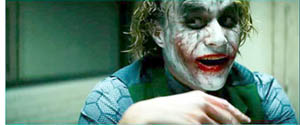 On the whole, though, the most highly regarded acting has moved closer to impersonation. Today your serious actors shape-shift for every project—acquiring accents, burying their faces in makeup, gaining or losing weight. We might be inclined to blame the Method, but classical actors went through the same discipline. Olivier, with his false noses and endless vocal range, might be the impersonators’ patron saint. His followers include Streep, Our Lady of Accents, and the self-flagellating young De Niro. Ironically, although today’s performance-as-impersonation aims at greater naturalness, it projects a flamboyance that advertises its mechanics. It can even look hammy. Thus, as so often, does realism breed artifice.
On the whole, though, the most highly regarded acting has moved closer to impersonation. Today your serious actors shape-shift for every project—acquiring accents, burying their faces in makeup, gaining or losing weight. We might be inclined to blame the Method, but classical actors went through the same discipline. Olivier, with his false noses and endless vocal range, might be the impersonators’ patron saint. His followers include Streep, Our Lady of Accents, and the self-flagellating young De Niro. Ironically, although today’s performance-as-impersonation aims at greater naturalness, it projects a flamboyance that advertises its mechanics. It can even look hammy. Thus, as so often, does realism breed artifice.
Horror and comic-book movies offer ripe opportunities for this sort of masquerade. In a straight drama, confined by realism, you usually can’t go over the top, but given the role of Hannibal Lector, there is no top. The awesome villain is a playground for the virtuoso, or the virtuoso in training. You can overplay, underplay, or over-underplay. You can also shift registers with no warning, as when hambone supreme Orson Welles would switch from a whisper to a bellow. More often now we get the flip from menace to gargoylish humor. Jack Nicholson’s “Heeere’s Johnny” in The Shining is iconic in this respect. In classic Hollywood, humor was used to strengthen sentiment, but now it’s used to dilute violence.
Such is the range we find in The Dark Knight. True, some players turn in fairly low-key work. Morgan Freeman plays Morgan Freeman, Michael Caine does his usual punctilious job, and Gary Oldman seems to have stumbled in from an ordinary crime film. Maggie Gylenhaal and Aaron Eckhart provide a degree of normality by only slightly overplaying; even after Harvey Dent’s fiery makeover Eckhart treats the role as no occasion for theatrics.
All else is Guignol. The Joker’s darting eyes, waggling brows, chortles, and restless licking of his lips send every bit of dialogue Special Delivery. Ledger’s performance has been much praised, but what would count as a bad line reading here? The part seems designed for scenery-chewing. By contrast, poor Bale has little to work with. As Bruce Wayne, he must be stiff as a plank, kissing Rachel while keeping one hand suavely tucked in his pocket, GQ style. In his Bat-cowl, he’s missing as much acreage of his face as Dent is, so all Bale has is the voice, over-underplayed as a hoarse bark.
In sum, our principals are sweating through their scenes. You get no strokes for making it look easy, but if you work really hard you might get an Oscar.
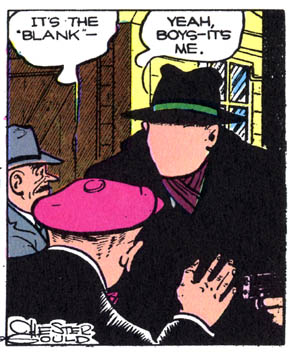 A taste for the grotesque. Horror films have always played on bodily distortions and decay, but The Exorcist (1973) raised the bar for what sorts of enticing deformities could be shown to mainstream audiences. Thanks to new special effects, movies like Total Recall (1990) were giving us cartoonish exaggerations of heads and appendages.
A taste for the grotesque. Horror films have always played on bodily distortions and decay, but The Exorcist (1973) raised the bar for what sorts of enticing deformities could be shown to mainstream audiences. Thanks to new special effects, movies like Total Recall (1990) were giving us cartoonish exaggerations of heads and appendages.
But of course the caricaturists got here first, from Hogarth and Daumier onward. Most memorably, Chester Gould’s Dick Tracy strip offered a parade of mutilated villains like Flattop, the Brow, the Mole, and the Blank, a gentleman who was literally defaced. The Batman comics followed Gould in giving the protagonist an array of adversaries who would even raise an eyebrow in a Manhattan subway car.
Eisenstein once argued that horrific grotesquerie was unstable and hard to sustain. He thought that it teetered between the comic-grotesque and the pathetic-grotesque. That’s the difference, I suppose, between Beetlejuice and Edward Scissorhands, or between the Joker and Harvey Dent. In any case, in all its guises the grotesque is available to our comic-book pictures, and it plays nicely into the oversize acting style that’s coming into favor.
You’re thinking that I’ve gone on way too long, and you’re right. Yet I can’t withhold two more quickies:
The global recognition of anime and Hong Kong swordplay films. During the climactic battle between Iron Man 2.0 and 3.0, so reminiscent of Transformers, I thought: “The mecha look has won.”
Learning to love the dark. That is, filmmakers’ current belief that “dark” themes, carried by monochrome cinematography, somehow carry more prestige than light ones in a wide palette. This parallels comics’ urge for legitimacy by treating serious subjects in somber hues, especially in graphic novels.
Time to stop! This is, after all, just a list of causes and conditions that occurred to me after my day in the multiplex. I’m sure we can find others. Still, factors like these seem to me more precise and proximate causes for the surge in comic-book films than a vague sense that we need these heroes now. These heroes have been around for fifty years, so in some sense they’ve always been needed, and somebody may still need them. The major media companies, for sure. Gazillions of fans, apparently. Me, not so much. But after Hellboy II: The Golden Army I live in hope.
Thanks to Hank Luttrell for information about the history of the comics market.
The superhero rankings I mentioned are: Spider-Man 3 (no. 12), Spider-Man (no. 17), Spider-Man 2 (no. 23), The Dark Knight (currently at no. 29, but that will change), Men in Black (no. 42), Iron Man (no. 45), X-Men: The Last Stand (no. 75), 300 (no. 80), Men in Black II (no. 85), Batman (no. 95), and X2: X-Men United (no. 98). The usual caveat applies: This list is based on unadjusted grosses and so favors recent titles, because of inflation and the increased ticket prices. If you adjust for these factors, the list of 100 all-time top grossers includes seven comics titles, with the highest-ranking one being Spider-Man, at no. 33.
For a thoughtful essay written just as the trend was starting, see Ken Tucker’s 2000 Entertainment Weekly piece, “Caped Fears.” It’s incompletely available here.
Comics aficionados may object that I am obviously against comics as a whole. True, I have little interest in superhero comic books. As a boy I read the DC titles, but I preferred Mad, Archie, Uncle Scrooge, and Little Lulu. In high school and college I missed the whole Marvel revolution and never caught up. Like everybody else in the 1980s I read The Dark Knight Returns, but I preferred Watchmen (and I look forward to the movie). I like the Hellboy movies too. But I’m not gripped by many of the newest trends in comics. Sin City strikes me as a fastidious piece of draftsmanship exercised on formulaic material, as if Mickey Spillane were rewritten by Nicholson Baker. Since the 80s my tastes have run to Ware, Clowes, a few manga, and especially Eurocomics derived from the clear-line tradition (Chaland, Floc’h, Swarte, etc.). I believe that McCay and Herriman are major twentieth-century artists, with Chester Gould and Cliff Sterrett worth considering for the honor too.
You can argue that Oliver Stone’s films create ambivalence inadvertently. JFK seems to have a clear-cut message, but the plotting is diverted by so many conspiracy scenarios that the viewer might get confused about what exactly Stone is claiming really happened.
On the ways that worldmaking replaces character-centered media storytelling, the crucial discussion is in Henry Jenkins, Convergence Culture: Where Old and New Media Collide (New York University Press, 2007), 113-122.
On franchise-building, see the detailed account in detail in Eileen R. Meehan, “‘Holy Commodity Fetish, Batman!’: The Political Economy of a Commercial Intertext,” in The Many Lives of the Batman, ed. Roberta E. Pearson and William Uricchio (Routledge, 1991), 47-65. Other essays in this collection offer information on the strategies of franchise-building.
Just as Star Wars helped legitimate itself by including Alec Guinness in its cast (surely he wouldn’t be in a potboiler), several superhero movies have a proclivity for including a touch of British class: McKellan and Stewart in X-Men, Caine in the Batman series. These old reliables like to keep busy and earn a spot of cash.
PS: 21 August 2008: This post has gotten some intriguing responses, both on the Internets and in correspondence with me, so I’m adding a few here.
Jim Emerson elaborated on the zeitgeist motif in an entry at Scanners. At Crooked Timber, John Holbo examines how much the film’s dark cast owes to the 1990s reincarnation of Batman. Peter Coogan writes to tell me that he makes a narrower version of the zeitgeist argument in relation to superheroes in Chapter 10 of his book, Superhero: The Secret Origin of a Genre, to be reprinted next year. Even the more moderate form he proposes doesn’t convince me, I’m afraid, but the book ought to be of value to readers interested in the genre.
From Stew Fyfe comes a letter offering some corrections and qualifications.
*Stew points out that chain stores like Borders do sell some periodical comics titles, though not always regularly.
*Comics publishing, while not at the circulation levels seen in the golden era, is undergoing something of a resurgence now, possibly because of the success of the franchise movies. Watchmen sales alone will be a big bump in anticipation of the movie.
*As for my claim that film is driving the publishing side, Stew suggests that the relations between the media are more complicated. The idea that the tail wags the dog might apply to DC, but Marvel has made efforts to diversify the relations between the books and the films.
They’ve done things like replacing the Hulk with a red, articulate version of the character just before the movie came out (which is odd because if there’s one thing that the general public knows about the character is that he’s green and he grunts). They’ve also handed the Hulk’s main title over to a minor character, Hercules. They’ve spent a year turning Iron Man, in the main continuity, into something of a techno-fascist (if lately a repentant one) who locks up other superheroes.
Stew speculates that Marvel is trying to multiply its audiences. It relies on its main “continuity books” to serve the fanbase who patronizes the shops, and the films sustain each title’s proprietary look and feel. In addition, some of the books offer fresh material for anyone who might want to buy the comic after seeing the film; this tactic includes reprinted material and rebooted continuity lines in the Ultimate series. Marvel has also brought in film and TV creators as writers (Joss Whedon, Kevin Smith), while occasionally comics artists work in TV shows like Heroes, Lost, and Battlestar Galactica. So the connections are more complex than I was indicating.
Thanks to all these readers for their comments.












